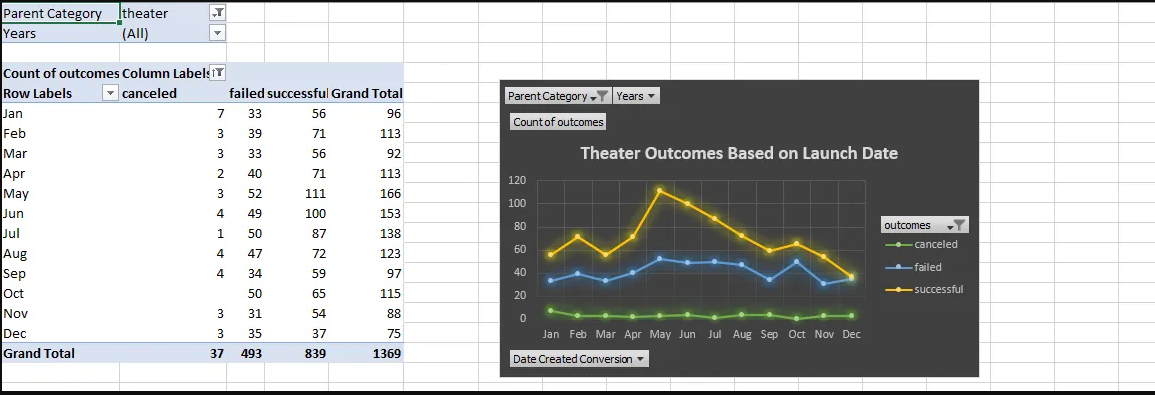Overview
Louise's play "Fever" came close to achieving its fundraising goal in a short period. As part of the UTA Bootcamp, an analysis was conducted to evaluate how different campaigns performed based on their launch dates and funding goals.
Methodology
- Data cleaning: The dataset was reviewed to remove irrelevant fields and unnecessary information. Columns were filtered to focus on relevant campaigns. The data was checked for accuracy and completeness.
- The cleaned data was analyzed to identify trends and patterns. Metrics like successful and failed campaigns were calculated. Filtering helped uncover anomalies, such as no failed campaigns in the play subcategory.
- Visualization: Graphs and charts were created to show trends and outcomes. These visuals highlighted the impact of launch dates and funding goals on campaign success.
- Forecasting: Trends were used to predict future campaign outcomes. Campaigns in May and June or with funding goals below $5,000 were forecasted to have higher success rates.
Analysis
To complete the analysis, I followed the step-by-step instructions provided in the training module. I encountered challenges during the process, which I addressed by researching solutions through Google and watching instructional videos. For example, I learned how to calculate the percentage of outcomes relative to the funding goal.
Challenges
One significant challenge was that I kept getting zero (0) for all failed subcategory plays. Initially, I thought I was making an error, but after filtering through the Kickstarter dataset, I discovered that there were no failed campaigns in the play subcategory.
Visualizations
Below are some visualizations created during the analysis:

Key Insights
- Theater campaigns under the parent category launched in May and June are typically successful.
- The number of failed campaigns is almost half the number of successful campaigns.
- There are no canceled campaigns in the play subcategory. The success rate is higher when the funding goal is less than $1,000 or within the range of $1,000 to $4,999.
Limitations
- The dataset was very large, containing excessive information, which made it cumbersome to work with.
- Some fields in the dataset were irrelevant to the analysis.
Recommendations
- Further analysis could focus on campaigns marked as "Staff Pick" to identify additional success factors.